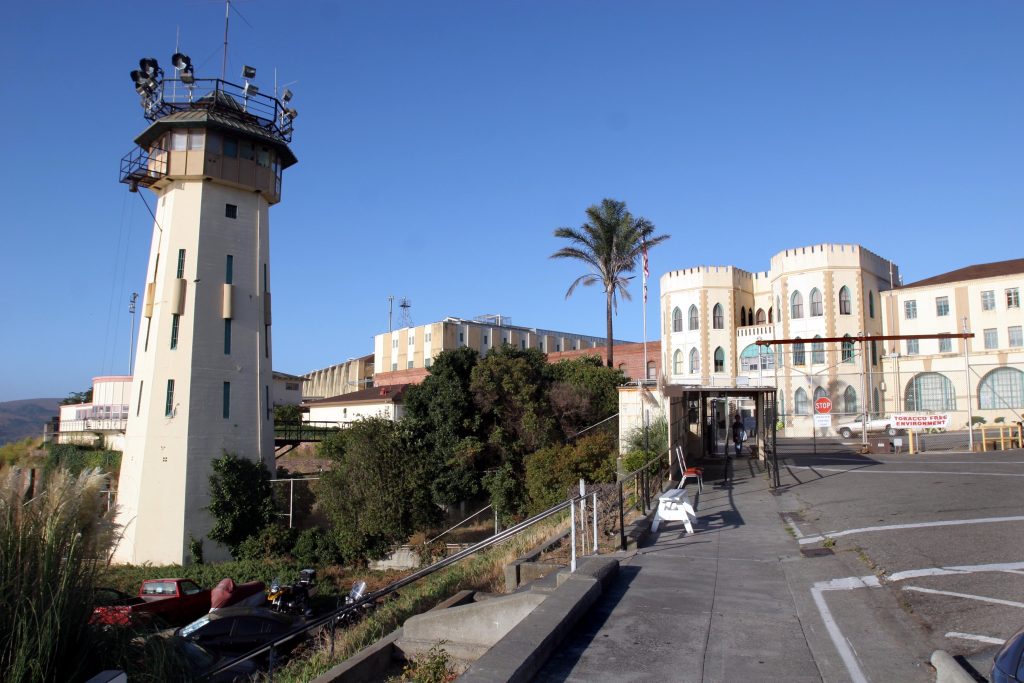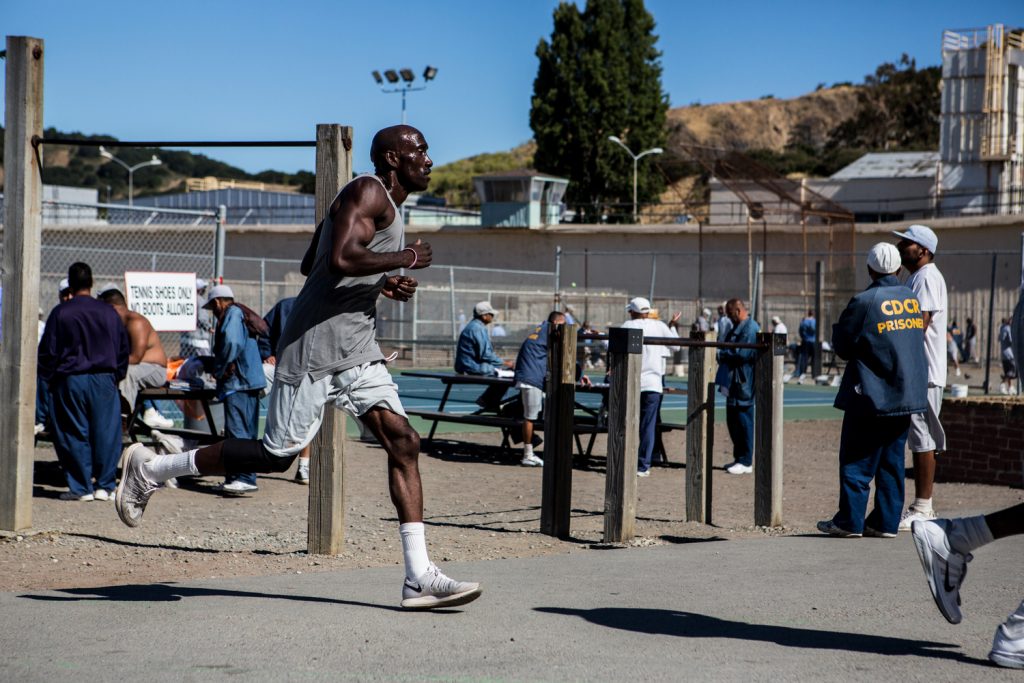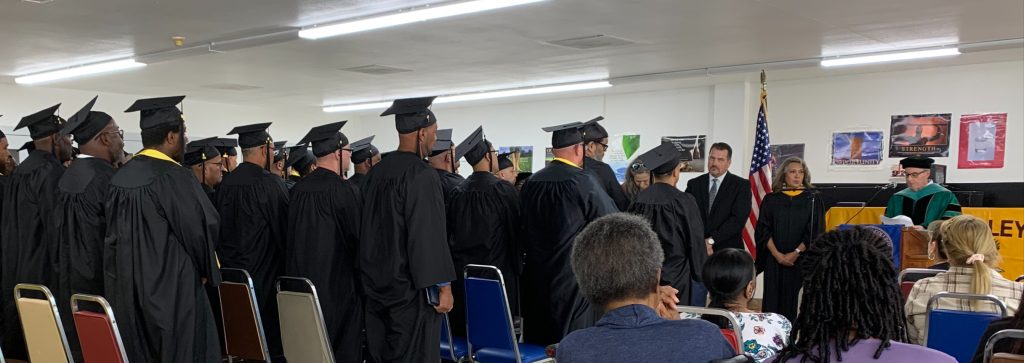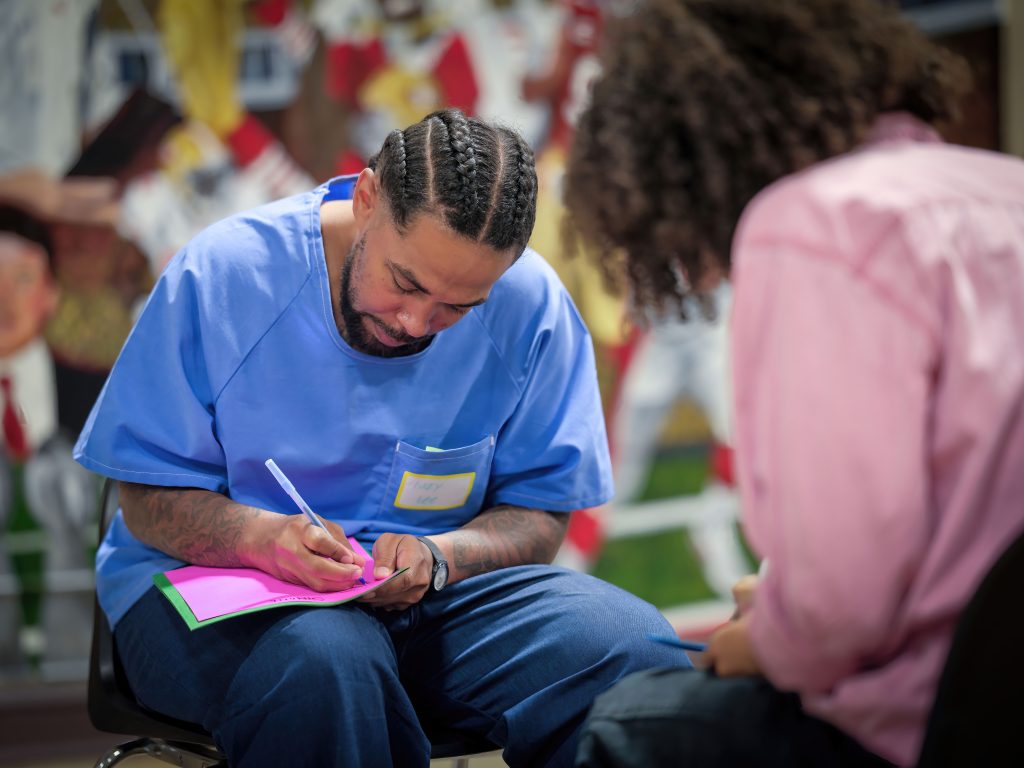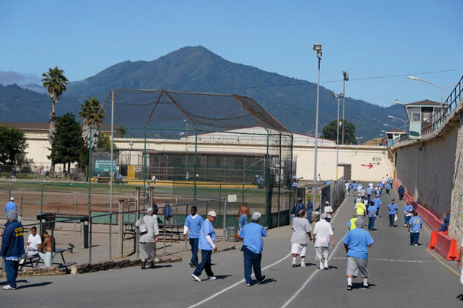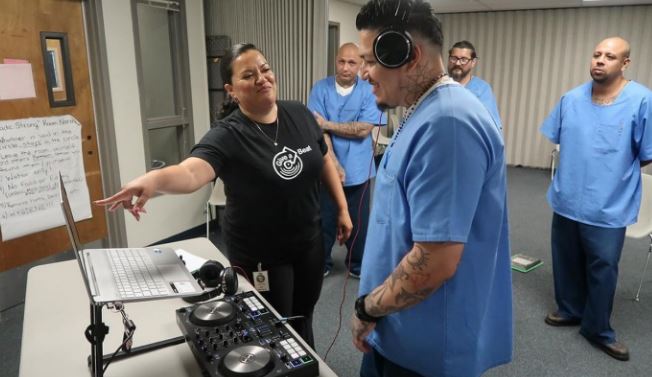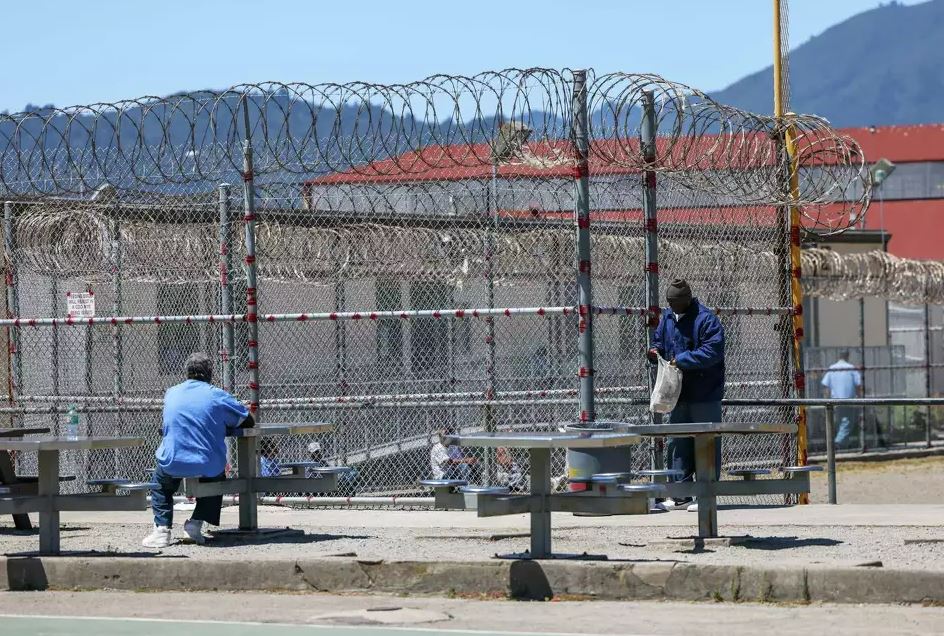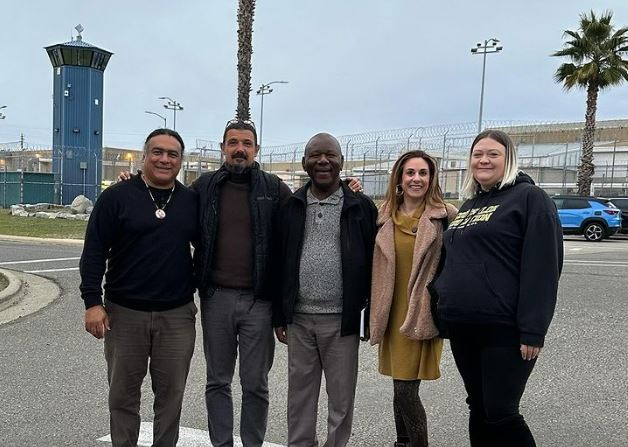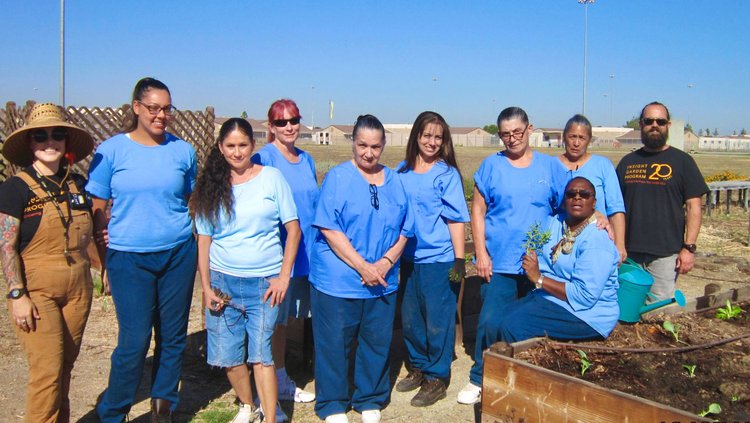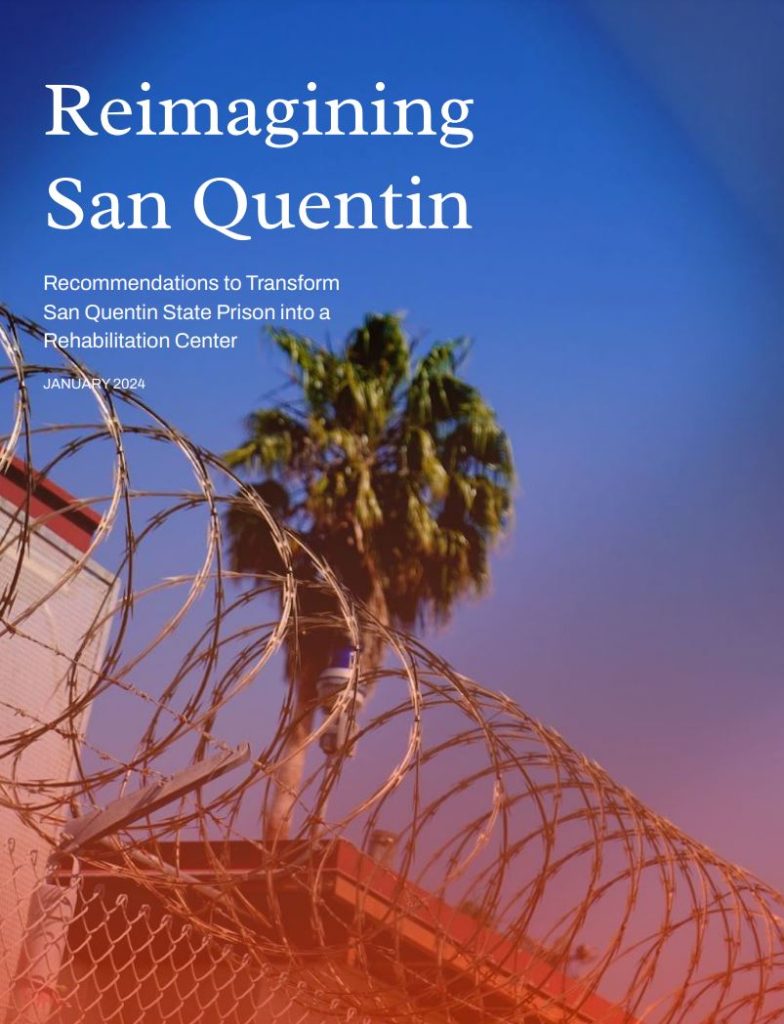San Quentin Rehabilitation Center (SQ)
(415) 454-1460
Main Street, San Quentin, CA 94964 (Directions)
San Quentin Rehabilitation Center, San Quentin, CA 94974
Please address the letter with the incarcerated persons full legal name, CDCR number, and last known housing and bed number. To view current location of the incarcerated individual, visit the California Incarcerated Records and Information Search (CIRIS)
About
San Quentin Rehabilitation Center, formerly known as San Quentin State Prison, stands as California’s oldest correctional institution, tracing its origins back to 1852. During its construction, inmates labored during the day to build the new prison while sleeping on the prison ship, the Waban, at night. Originally accommodating incarcerated people both male and female until the opening of the women’s prison at Tehachapi in 1933, San Quentin now rests atop 432 acres, overlooking the bay just 12 miles north of the Golden Gate Bridge in Marin County. In 2023, Governor Gavin Newsom unveiled plans to transform the facility into a rehabilitation center, signaling a significant shift in its mission and approach.
Learn more about the historic change happening at San Quentin Transformation here!
History
The site where San Quentin Rehabilitation Center now resides was originally referred to as “Puenta de Quentin,” named after the Native American Chief Quentin (“Kaynteen”). Despite historical obscurity surrounding the exact spelling and pronunciation, an 1834 Spanish land grant definitively established the name as “Puenta de Quentin.” California’s oldest correctional institution was built in July 1852 on the land known as Point San Quentin in Marin County, purchased for $10,000. Initially intended to replace the prison ship Waban, folklore suggests that on July 14, 1852, (Bastille Day {French Revolution}), the Waban arrived offshore with 40 to 50 convicts, earning San Quentin the moniker “Bastille by the Bay.” By October 12, 1852, negotiations had secured a contract to construct the first cell block
Type of Facility
The walled prison encompasses four (4) large cell blocks (West, South, North, and East Block), along with a maximum-security cell block (the Adjustment Center), Central Health Care Service Building, a medium security dorm setting, and a minimum-security firehouse.
Incarcerated Population
With a design capacity of 3,084, San Quentin currently houses Level I, II, and III inmates, including the male condemned population*. Population types range from general population to Enhanced Outpatient, CCC-MS.
Learn more about what the California Correctional Health Care Services offers here.
Staff and Career Opportunities
With a staff capacity of 3,935, San Quentin offers various job classifications, from Correctional Peace Officers, Correctional Officers, Sergeants, and Lieutenants to Captains and Correctional Counselor Services and beyond. Medical professionals such as Medical Doctors, Registered Nurses, Psychiatrists, and Psychologists are also employed, alongside Plant Operations staff, Cooks, Administrative staff, Recreational Therapists, Dietitians, and much more.
San Quentin is an unincorporated community conveniently located along Interstate 580 and a mile from Interstate 101 in Marin County. Thirty Minutes from San Francisco and twenty from Oakland, San Quentin the community and state prison hug the San Francisco Bay with some of the most incredible views anywhere in the United States and beyond. Within a half hour there are museums, college and professional sports teams along with parks and big city attractions that are easily accessible. Day trips to Muir Woods and Stinson Beach add to the San Francisco Bay Area allure. The unparalleled diversity of the area appeals to most making it an extraordinary place to work, live and relax. Although the city of San Francisco is known for foggy, cold weather, San Quentin is north of the city and the fog bank and is usually warmer and sunnier.

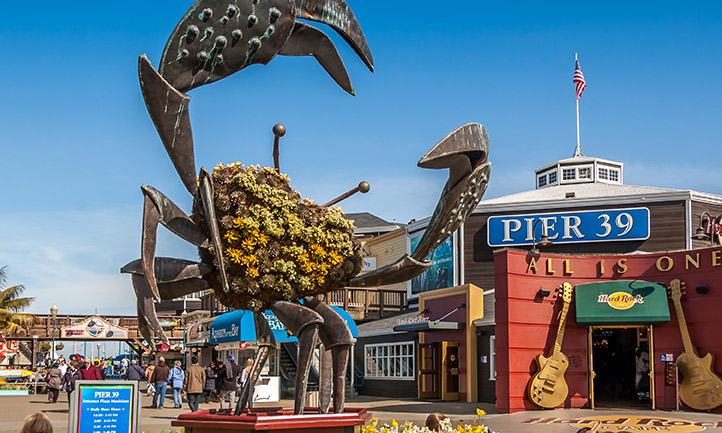
Rehabilitation
The California Department of Corrections and Rehabilitation (CDCR) offers a diverse array of programs aimed at fostering rehabilitation and reducing recidivism rates among the incarcerated population. These programs encompass various facets of personal development, education, and vocational training, both within and outside the prison walls.
Types of Programs:
DRP Programs:
The Division of Rehabilitative Programs (DRP) focuses on educational initiatives through the Office of Correctional Education, offering opportunities for the incarcerated populations to earn high school diplomas through a face-to-face college course. Additionally, Career Technical Education Programs provide practical skills training, equipping individuals with certifications that enhance their employability upon release. Treatment Programs address substance abuse issues, while Pre-release Programs assist inmates in transitioning back into society.
Click here to learn more about DRP.
Self-Help and Volunteer Programs:
In tandem with formal DRP programs, CDCR relies on the dedication of volunteers to facilitate self-help and religious programs within correctional facilities. These programs, overseen by the institutions’ Community Resources Managers, offer valuable opportunities for personal growth and skill development. From anger management to spiritual guidance, self-help initiatives play a crucial role in empowering individuals to become productive members of society upon release. While some programs receive grants to extend their reach within prisons, others operate purely on a volunteer basis, showcasing the collective effort towards rehabilitation.
Click her to learn more about becoming a volunteer.
California Prison Industry Authority (CalPIA):
Separate from the DRP and self-help initiatives, the California Prison Industry Authority (CalPIA) plays a pivotal role in preparing incarcerated individuals for successful reintegration into society. CalPIA offers accredited certification programs, allowing participants to acquire valuable skills in fields such as carpentry, welding, and automotive technology. Career Technical Education (CTE) programs provide vocational training tailored to industry demands, enhancing participants’ job prospects post-release. The Industry Employment Program (IEP) further enables the incarcerated population to gain hands-on experience in various sectors, fostering a sense of responsibility and work ethic. Through these initiatives, CalPIA not only reduces incarceration costs but also equips parolees with the tools necessary for long-term success, ultimately contributing to safer communities.
Click her to learn more about CalPIA
Distinctive San Quentin Programs
San Quentin offers unique programs such as San Quentin News, podcasts, and community partnerships with organizations like the Giants, Warriors, and others.
The San Quentin News is a 24-page newspaper written and produced by a staff of incarcerated people. The newspaper has approximately 35,000 subscribers, including CDCR’s 32 other prisons.
San Quentin News – Written By Incarcerated – Advancing Social Justice
“Uncuffed” was developed in 2012 after journalists from KALW and the podcast Life of the Law begin teaching radio workshops at SQRC. In 2019, Uncuffed was launched reaching national and international audiences. The Podcast focuses on positive transformation through rehabilitation. Participants learn audio storytelling and the use of audio equipment, software, and computers.
“Ear Hustle” launched in 2017 by two former participants in the Uncuffed program with first podcast created and produced in prison. Ear Hustle features stories of the daily realities of life inside California’s San Quentin State Prison, shared by those living it. The Ear Hustle team works in San Quentin’s media lab and in the KQED office in San Francisco.
The San Francisco Giants baseball organization provides philanthropic support to the San Quentin Giants, the official baseball team of SQRC. The goal is to support meaningful prison reform initiatives and powerful rehabilitation programs, the program will strengthen one of the prison’s longest running and most successful restorative initiatives.
Members of the Golden State Warriors organization participate in a yearly basketball game with the residents of San Quentin Rehabilitation Center.
Golden State Warriors return to San Quentin – Inside CDCR (ca.gov)
The Pollen Initiative is an organization dedicated to cultivating rehabilitative programs inside prisons across the US by focusing on media centers inside prisons and jails.
Mount Tamalpais College is the first community college in the nation that serves only incarcerated people. It provides an Associate of Arts degree program and College Preparatory Program, free of charge, to 300 people.
A Newly Accredited College for Incarcerated Students – Mount Tamalpais College (mttamcollege.edu)
SQRC Leadership
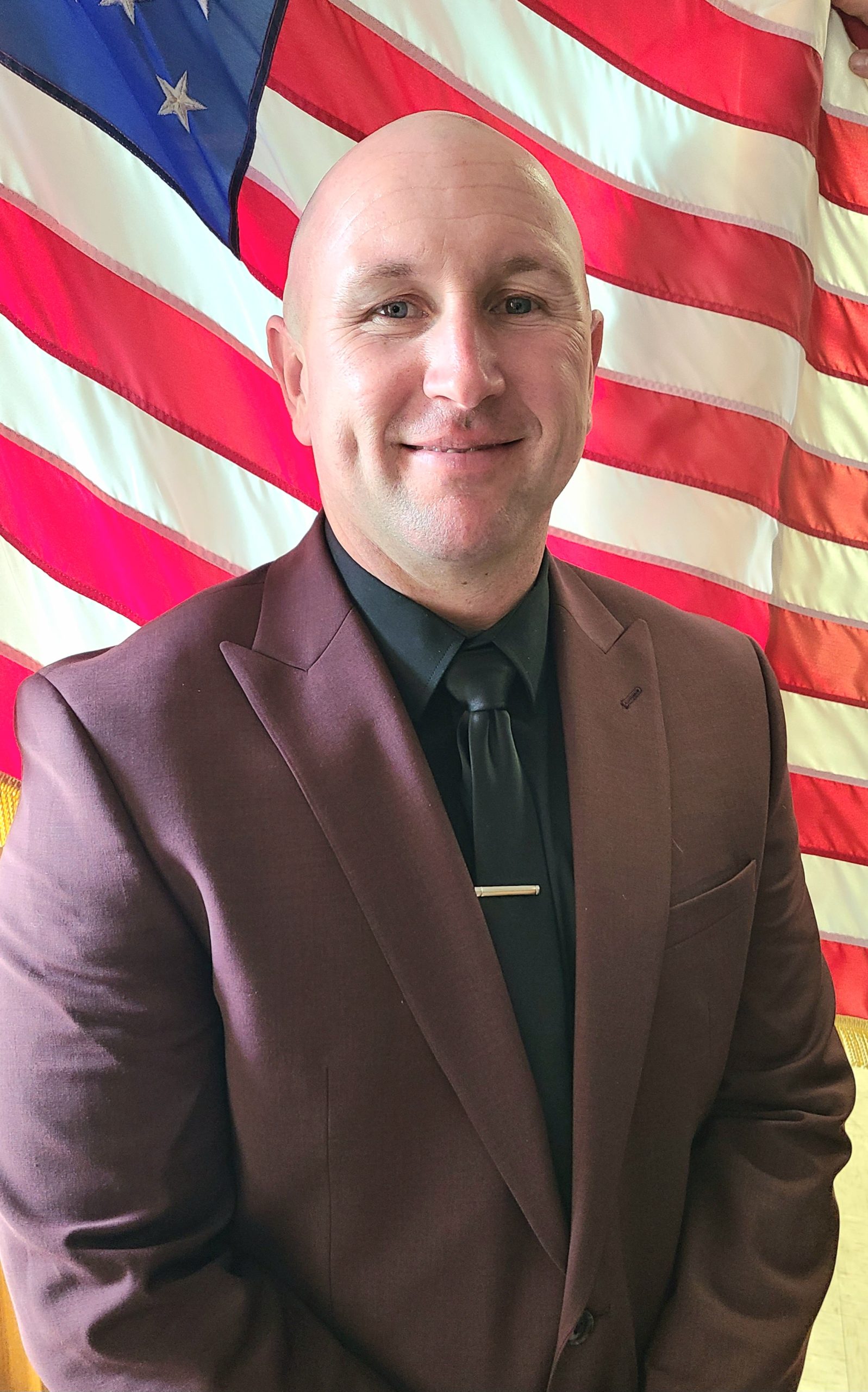
Chance Andes assumed the role of Acting Warden at the San Quentin Rehabilitation Center (SQRC) in January 2023. Prior to this assignment, Warden Andes served as a Correctional Administrator at California State Prison, Sacramento. He began his career with the Department of Corrections and Rehabilitation in March 2003 at the Richard A. McGee Correctional Training Center. His diverse assignments include institutions such as the Deuel Vocational Institution, California Medical Facility, California Correctional Center, Sierra Conservation Center, Correctional Training Facility, and the Class Action Management Unit. Throughout these roles, Warden (A) Andes has held various positions, including Correctional Captain, Correctional Lieutenant, Correctional Sergeant, and Correctional Officer.
Rhonda Litt was appointed Chief Executive Officer (CEO) of San Quentin Rehabilitation Center in December 2021. Prior to joining the executive leadership team at San Quentin, Ms. Litt served as the CEO for California Correctional Institution (CCI) in Tehachapi, CA for over seven (7) years and California City Institution in California City, CA for (2.5) years, concurrently.
She received a Master’s Degree in Public Administration from Southern University in Baton Rouge, LA, May 2010 and an undergraduate degree in Cell and Molecular Biology from Tulane University in New Orleans, LA in August 1996. Combined, she has 23 years of senior management experience in the following areas: nonprofit management; federally qualified health care (FQHC) policy development and executive leadership; statewide social services Temporary Assistance for Needy Families (TANF) programs; and prison primary care management.

